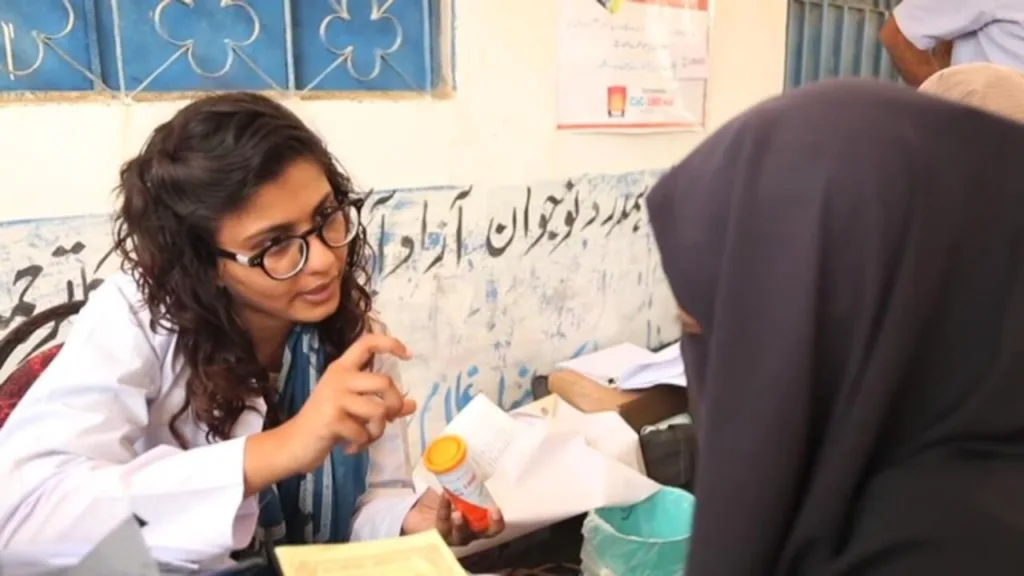In Pakistan, despite a critical need for qualified medical practitioners in the world’s fifth most populous country, a significant number of female doctors find themselves unemployed, according to a report released on Monday.
A joint research effort by Gallup Pakistan and PRIDE across Pakistan revealed that as many as 35% of female doctors are without employment. This situation is particularly ironic given that the government, despite limited resources, invests billions of rupees in subsidizing medical education at public sector universities.
Gallup Pakistan and PRIDE conducted their research based on the Labor Force Survey for 2020-21, analyzing data from the Pakistan Bureau of Statistics regarding the labor market, with a specific focus on female doctors. Their findings were disseminated within the country’s policy circles.
Pakistan is grappling with a severe shortage of qualified doctors. According to Bilal Gilani, Executive Director at Gallup Pakistan, “Pakistan has a dearth of trained medical female doctors.”

The survey reported that there are 104,974 female medical graduates in the country. Of this total, 65% (68,209) are employed in various private and state-owned medical facilities. However, 14.9% (15,619) are unemployed female doctors, and 20.1% (21,146) are completely out of the labor force.
Data from the Pakistan Medical and Dental Council (PMDC) indicates that approximately 200,000 doctors have been produced in Pakistan since its inception in 1946, with half of them being females.
Notably, the Bureau of Emigration & Overseas Employment states that around 30,000 doctors have left Pakistan since 1970, with an average of approximately 1,000 doctors settling abroad annually.
One of the major issues in Pakistan’s medical labor force is the underutilization of qualified female doctors who received their education at public sector universities. The government spends significantly less on their education compared to private institutions, leading to significant taxpayer investment going to waste each year when one in three female doctors opts out of the labor force. This situation results in the squandering of at least Rs200 billion in current value.
Dr. Shahid Naeem, Director of Policy Research at PRIDE, highlighted that a significant portion of female medical graduates who remain out of the labor force are married, indicating a social trend where medical education is pursued to secure better marriage prospects. He urged the government to review its seat allocation policy, especially in public sector medical colleges, to ensure better value for money.
The issue of female medical graduates not entering the workforce after completing their education is a serious concern, according to Dr. Naeem, warranting further exploration.
This survey’s findings also align with the phenomenon of “doctor brides” widely discussed in Pakistan, where families prioritize medical education for their daughters to enhance their marriage prospects.
The survey also presents a regional breakdown of doctor employment patterns, revealing that 28% of Pakistan’s total medical graduates reside in rural areas, while 72% are in urban areas. In rural regions, 52% of medical graduates are employed, and 31% are unemployed, which is 17% lower than the national average of 20% for those opting to remain out of the labor force.
In urban areas, around 70% of medical graduates are employed, with less than 9% being unemployed. However, more than 21% of doctors in urban areas are out of the labor force.
The regional analysis shows that employment opportunities for female graduates are notably higher in urban areas, at 78%.
It is worth mentioning that there are more unemployed female doctors in cities than in rural areas, and approximately 76% of these doctors are married. Among female medical graduates, the majority (54%) fall within the 25-34 years age group.
The data analysis underscores the importance of targeted policy efforts to improve employment opportunities for medical graduates, particularly in rural areas where unemployment rates are higher. The survey encompassed female medical graduates with MBBS, BDS, MS/MSc, MPhil, or PhD degrees in any medical field.
This survey collected data from nearly 99,900 households across Pakistan, providing district-level representative results for the first time.
For more related news Click Here.

